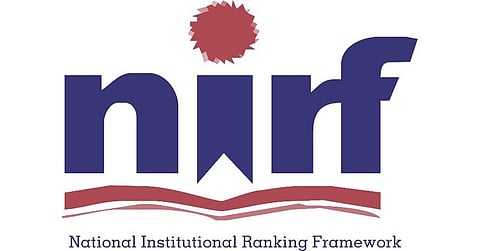Here’s when to expect NIRF rankings 2025 – changes in evaluation criteria explained
What is NIRF?
The National Institutional Ranking Framework (NIRF) 2025 rankings are likely to be out in the first week of August. According to a report by the National Board of Accreditation (NBA), the final announcement will be made once the Ministry of Education (MoE) decides on the date, reported News18.
NIRF, launched by the MoE, is a nationwide ranking system that assesses higher education institutions across various categories and degrees in the country. Released annually, the ranking helps students, policymakers, and educators evaluate institutional performance on set parameters.
What to expect from NIRF 2025?
The 2025 edition of NIRF rankings will come with a rehaul, including a new evaluation category focused on Sustainable Development Goals (SDGs). This metric is set to assess how institutions contribute to environmental responsibility, sustainability, and social development, in tandem with global education yardsticks.
Another notable update is the introduction of negative marking for retracted research papers – first time in the history of NIRF. Under this revised system, institutions will be penalised for withdrawn or retracted research publications. According to Anil Sahasrabudhe, Chairperson of the NBA, a specific formula has been set in place to assign negative weightage, which will either be based on the percentage or number of retractions.
Sahasrabudhe also clarified that while this year’s penalty will be low, it’s likely to go up in the coming years if the issue of retracted publications is not attended to.
This change will particularly impact the “Research and Professional Practices” parameter, which measures the volume and quality of institutional research through various metrics, such as citation impact, number of publications, and peer-reviewed journal output.
How are NIRF rankings prepared?
The NIRF rankings are compiled using a transparent and well-defined methodology developed by the Ministry of Education and implemented by the National Board of Accreditation. Institutions are evaluated across several key parameters:
Teaching, Learning and Resources (TLR): Factors such as faculty-student ratio, faculty qualifications, and the availability of financial and academic resources.
Research and Professional Practices (RP): This includes research productivity, publications, patents, and other scholarly and professional activities.
Graduation Outcomes (GO): Assesses placement records, progression to higher education, and entrepreneurial ventures.
Outreach and Inclusivity (OI): Measures diversity in terms of region and gender, along with the institution's outreach efforts.
Perception (PR): Captures feedback from employers and academic peers regarding the institution’s reputation.
Starting in 2025, the rankings will also incorporate the new Sustainable Development Goals (SDG) category and introduce penalties for retracted research papers, enhancing both credibility and global alignment.
The NIRF rankings remain a vital benchmark for students and institutions, providing a data-backed perspective on the performance, strengths, and areas in need of improvement within India’s higher education landscape.



